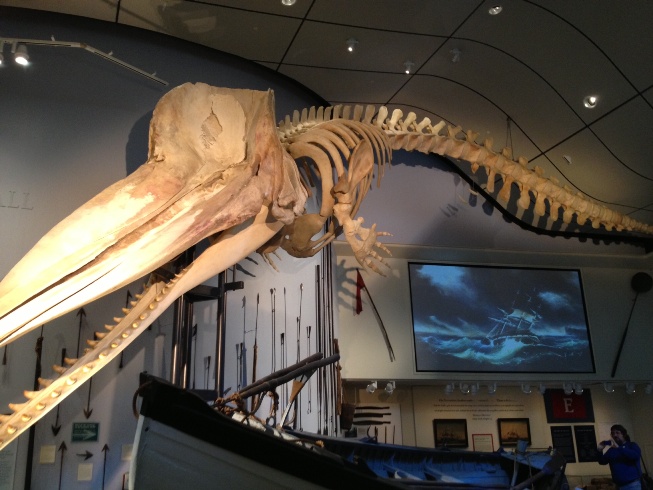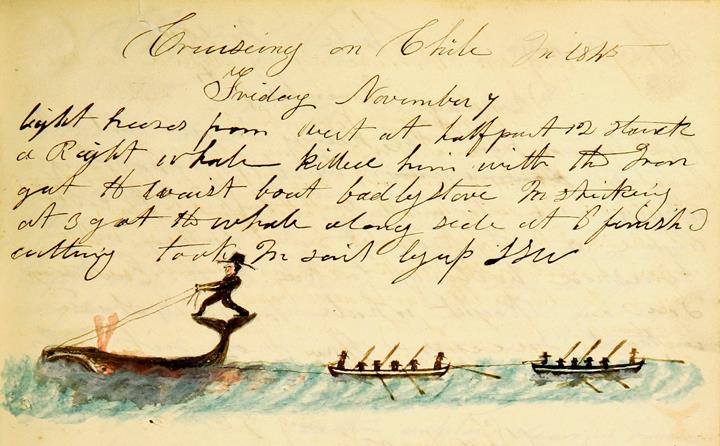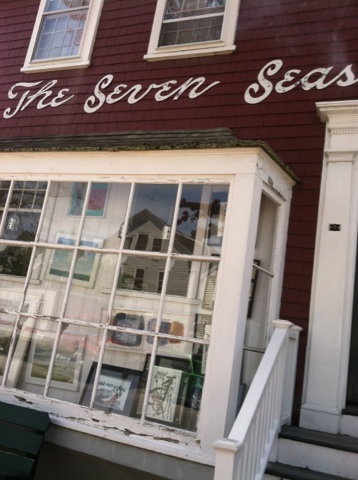Mapping the
Essex
Grade Level: 2
Standards: 1, 4, 12, 15
Reality vs.
Stereotypes of Foreign Locations
Grade Level: 4
Standards: 1, 3, 4, 6, 9, 13, 17, 18
Marine life Ecosytems
Grade Level: 6
Standards: not listed
Lesson Resources (in
PPT)
Geography of
Sperm Whales
Grade Level: 4
Standards: 1, 2,
8, 9, 14
Lesson Resources (in PPT)
Photo at right: Students who prepared these lesson
plans visited the Nantucket Whaling Museum to learn more
about the geography of whaling and life aboard whaleships
such as the Essex. The museum houses a whaleboat and gear,
which is dwarfed by the sperm whale skeleton whose
recovery is described in the epilogue of In the Heart
of the Sea.
Standing in the far corner for scale is Yours Truly (Dr.
Hayes-Boh) in his whaleboat
rowing shirt. Rowing as a hobby is good
exercise, but provides only the merest hint of the work
involved in the life of a real whaleboat crew.
|

Photo by Kayla Leary
In August 2015, I saw John Shea
perform as Ahab in the bow of this boat during an amazing
performance of Orson Welles' Moby
Dick Rehearsed. I was almost in tears,
it was such a passionate performance.
|



